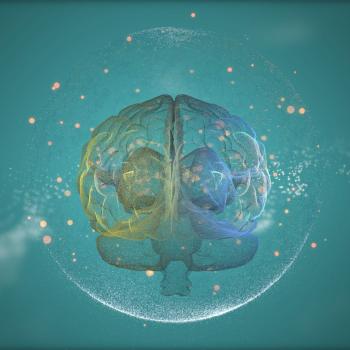Color of Silence: Sensory Imagery in Pat Mora's Poem "Echoes"

In this lesson, students explore how writers use sensory imagery as a literary device to make text more meaningful for the reader. They begin by using all of their senses to describe known objects such as pasta, chocolate, or grapes. Students first feel and listen to the object, in a bag, before then taking it out of the bag to look at, smell, and taste it. They then use at least three senses to write a poem about the object they've described. Next, they evaluate how this literary device functions in Pat Mora's poem “Echoes.” As students read this poem, they look for sensory images and write an explanation of how these images contribute to the meaning of Mora's poem. Finally, students think about how sensory images work in their own poems and then make appropriate revisions to their work.
Featured Resources
Using Your Senses: Students use this sheet to record what an object feels, smells, sounds, tastes, and looks like.
From Theory to Practice
"Fearful and frustrating," contends NCTE author Jaime R. Wood, "are the words I've often heard to describe the experience that many students have when they read poetry in school" (xi). In response to these anxieties, Wood argues for the need to provide students with exposure to living voices, poets who are "alive and writing" and whose "cultural backgrounds. parallel many of the lives of our students" to reduce the initial hesitation students may have toward the study of poetry (xii). She takes her focus on living a step further by offering students a learning invitation that is a lived multisensory experience, providing readers with the necessary scaffolding that builds toward literary understanding with the ultimate goal of "introduc[ing] students to a kind of literacy about which they can feel excited" (xii).
Further Reading
Common Core Standards
This resource has been aligned to the Common Core State Standards for states in which they have been adopted. If a state does not appear in the drop-down, CCSS alignments are forthcoming.
State Standards
This lesson has been aligned to standards in the following states. If a state does not appear in the drop-down, standard alignments are not currently available for that state.
NCTE/IRA National Standards for the English Language Arts
- 1. Students read a wide range of print and nonprint texts to build an understanding of texts, of themselves, and of the cultures of the United States and the world; to acquire new information; to respond to the needs and demands of society and the workplace; and for personal fulfillment. Among these texts are fiction and nonfiction, classic and contemporary works.
- 2. Students read a wide range of literature from many periods in many genres to build an understanding of the many dimensions (e.g., philosophical, ethical, aesthetic) of human experience.
- 3. Students apply a wide range of strategies to comprehend, interpret, evaluate, and appreciate texts. They draw on their prior experience, their interactions with other readers and writers, their knowledge of word meaning and of other texts, their word identification strategies, and their understanding of textual features (e.g., sound-letter correspondence, sentence structure, context, graphics).
- 4. Students adjust their use of spoken, written, and visual language (e.g., conventions, style, vocabulary) to communicate effectively with a variety of audiences and for different purposes.
- 5. Students employ a wide range of strategies as they write and use different writing process elements appropriately to communicate with different audiences for a variety of purposes.
- 6. Students apply knowledge of language structure, language conventions (e.g., spelling and punctuation), media techniques, figurative language, and genre to create, critique, and discuss print and nonprint texts.
- 8. Students use a variety of technological and information resources (e.g., libraries, databases, computer networks, video) to gather and synthesize information and to create and communicate knowledge.
- 11. Students participate as knowledgeable, reflective, creative, and critical members of a variety of literacy communities.
- 12. Students use spoken, written, and visual language to accomplish their own purposes (e.g., for learning, enjoyment, persuasion, and the exchange of information).
Materials and Technology
- Classroom map of North America (if you do not have a classroom map, you may project an interactive image from Google Maps or make a transparency of a map of North America courtesy of National Geographic)
- Copies of the poem “Echoes” by Pat Mora


